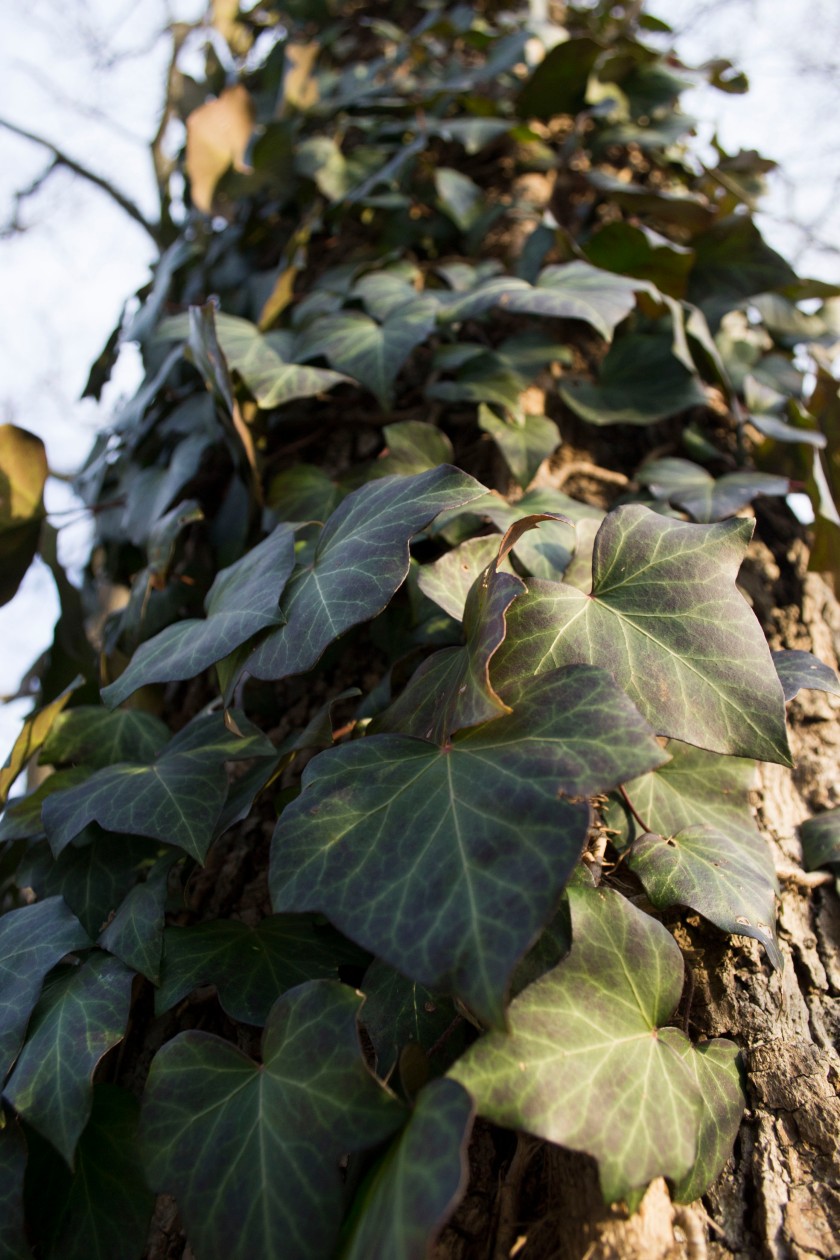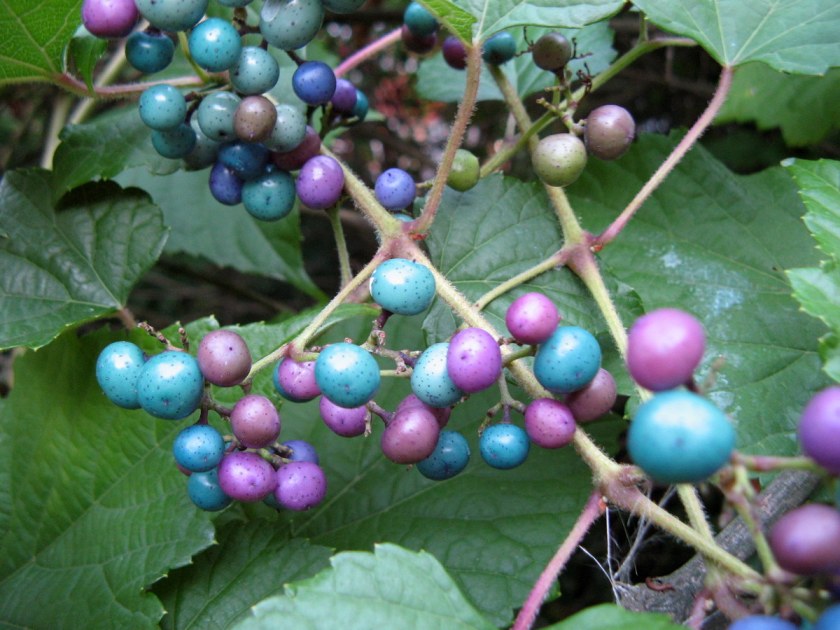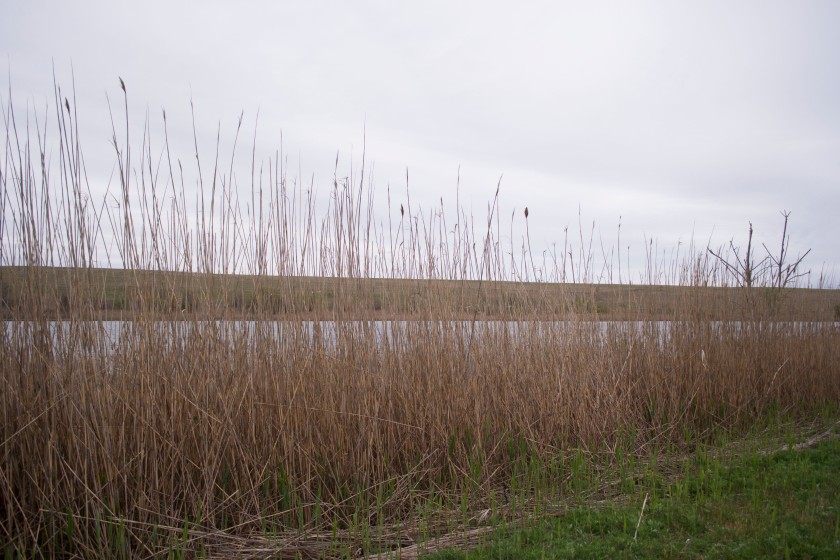When I go hiking, one of the first things I notice is whether an area has been taken over by invasive species. It detracts from my enjoyment of the experience because I understand how harmful they can be to an ecosystem. Invasive or nuisance species are usually non-native plants that spread and naturalize. They are able to out-compete with native species and can take over areas. Many invasive species began as ornamental plants because they are hardy and require little attention (EDD MapS 2016). In this blog I will focus on three invasive species that I saw in New York parks during my investigations: kudzu, porcelain berry, and phragmites.
Kudzu is a semi-woody, invasive vine that originated in China and Japan (Cornell University 2016a). It has beautiful purple flowers, which is what encouraged horticulturalists to begin growing it in the United States. It was then used as crop cover to prevent erosion and also as livestock feed. Now Kudzu is a prohibited and regulated invasive plant (Cornell University 2014) in New York. It is a nitrogen fixer, which means it can thrive in nutrient-poor soil, and is also drought tolerant. This combination made kudzu able to thrive in the US. Kudzu’s goal is to get as much sunlight as possible, so it climbs up trees and any other vertical structures, wrapping itself around it until it’s completely covered. Kudzu competes with trees for sunlight, nutrients, and water, but it also suffocates them. Sometimes the weight of kudzu vines leads to trees collapsing. It is rapidly growing and can out-compete native plants. This is very dangerous for wildlife as it can change the availability of food in their diet. There are enormous economic impacts from this fast-growing plant. Control of it can cost up to $200 per acre per year. It takes 5-10 year of focused eradication to get rid of a kudzu infestation and that means digging up their immense root structures and spraying herbicide.

Like Kudzu, porcelain berry is a prohibited plant (Cornell University 2014), but only in certain states. It is not allowed in New York, but in other states it can still be used in landscaping and ornamentally. (Plant Conservation Alliance 2005). It originated in Northern Asia and is a type of grape vine with pretty berries, which is what drew so many horticulturists to use it. It spreads over open and wooded areas and grows over other plants, thus shading them out and taking over the habitat. A plant can grow up to 15 feet during one season. Porcelain berry is easily spread by birds and other animals who eat the berries, so it is important to get rid of the plant before flowering occurs. To remove it a combination of hand pulling and application of herbicides like triclopyr is recommended. It can take many years to fully eradicate a porcelain berry plant.

Phragmites is a bit more complicated than other invasive plants. There are a three different types of phragmites and only one of them is non-native (Cornell University 2016b). The problem species is Phragmites australius, also known as common reed, which was brought in from ship ballast in the late 18th century. Non-native phragmites likes to grow near wetlands, but it will take over any open area. It is a nuisance because it can decrease the salinity of marshes, decrease the area of usable habitat for animals, and increase the chance of fire to an area. Control of phragmites populations is very important, though one has to be careful to only remove the non-native species. Goats can be used to consume the plant. Also fire has been proven to sometimes be effective, but it is unclear if it gets hot enough to kill the plant’s rhizomes – an underground stem, which phragmites uses to reproduce. Cutting the plant and applying herbicides can also help. It is important to immediately reseed the area with native competitors to prevent recolonization and erosion from occurring. Phragmites roots help stabilize the soil and once it is eradicated native plants are needed to strengthen it.

Though it may seem hard to control and prevent invasive species from taking over parks, it is vital to conserve these natural areas for the future. If you want to help get rid of invasive species, I recommend searching for a “friends of” or “conservancy” for your favorite local park and checking to see if they have any strikes against nuisance plants planned in the near future. The Natural Areas Conservancy would also be a great group to volunteer with to help protect New York City ecosystems. You can also look at volunteer vacation options with the American Hiking Society if you’d like to explore new areas while helping out a park.
Thank you for reading my blog. I have had a wonderful time exploring new parks across New York. I hope you learned something or felt encouraged to explore parks in your area. This will be my last post for a while, but I do plan to return with more entries about my explorations in the future.
Thanks again,
Lily
Bibliography:
Cornell University. 2014. New York State Prohibited and Regulated Invasive Plants. NYS Department of Environmental Conservation. NYS Department of Agriculture and Markets. http://www.dec.ny.gov/docs/lands_forests_pdf/isprohibitedplants2.pdf
Cornell University. 2016a. Kudzu (Pueraria montana). New York Invasive Species Information. http://www.nyis.info/index.php?action=invasive_detail&id=60
Cornell University. 2016b. Common Reed (Phragmites australis (Cav.) Trin. Ex Steud.). New York Invasive Species Information. http://www.nyis.info/index.php?action=invasive_detail&id=42
EDD MapS. 2016. Why Plants Become Invasive?. Early Detetion & Distribution Mapping System. https://www.eddmaps.org/about/why_plants_invasive.html
Plant Conservation Alliance. 2005. Fact Sheet: Porcelain-berry. National Parks Service. https://www.nps.gov/Plants/alien/fact/pdf/ambr1.pdf
Porcelain berry image: http://www.gardeningknowhow.com/wp-content/uploads/2012/07/porcelain-berry-vine1.jpg

